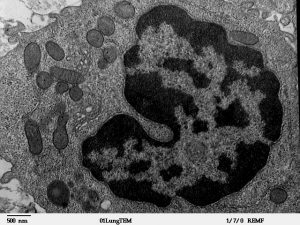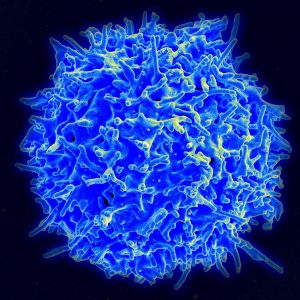A Breath of Fresh Air

At Columbia, a new way of treating lung disease is under development. As reported recently in Science Advances, a Columbia research group, headed by Gordana Vunjak-Novakovic, Ph.D., from the Department of Biomedical Engineering, developed a way to prepare grafted lung tissue for transplantation that could make the process easier. The challenge has been removing the epithelial cells, which ultimately make up the surface of the organ, from potential grafts without damaging the blood vessels. Applying a detergent solution to lung tissue from rats, Dr. Vunjak-Novakovic’s team was able to obtain grafts that could subsequently be used as scaffolds for human pulmonary cells and stem cell-derived lung epithelial cells. Although this approach remains in a very early state, the results here indicate promise for this technology for end-stage lung diseases such as emphysema.
Eliminating Obesity and Diabetes With Injections
You’ve probably heard that there’s an epidemic of obesity in the United States. Obesity carries an enormous health cost because it is linked to a variety of major health complications, including diabetes and heart disease. At a cell level, white fat cells require more energy to work off than brown fat cells. Approaches to fight obesity now include efforts to increase the number of brown fat cells. Scientists at Purdue University might have found a significant shortcut to creating more brown fat cells. By inhibiting the Notch signaling pathway, Meng Deng, Ph.D., of the Weldon School of Biomedical Engineering and his colleagues were able to cause white fat cells to convert into brown cells. Reporting their results in Molecular Therapy, the team used nanoparticles loaded with dibenazapine, a chemical used widely in pharmacology, to treat obese mice with targeted injections of the drug-laden nanoparticles. Results showed that the reduction of white fat in the mice was correlated with improved glucose metabolism and reduced body weight. While it’s not yet time to cancel the gym membership, an easier way to combat obesity could be on the horizon.
Diabetes is a chronic health condition with treatments that include diet management and/or insulin injections. In a new twist on diabetes treatments, scientists at the University of Toronto have shown, in a recent PNAS study, that pancreatic islets cells, which produce insulin, could be injected subcutaneously to reverse diabetes in mice. While the idea of transplanting islets into the pancreas has been investigated for some time, this is the first time that transplants were placed under the skin, far away from the pancreas. Impressively, the modules could be retrieved and reused. If future investigations are successful, these modules could form the basis of a treatment for type 1 (so-called juvenile) diabetes, which is caused by autoimmune destruction of the pancreatic islets.
News from New England
Feng Zhang, Ph.D., associate professor in the Departments of Brain and Cognitive Sciences and of Biological Engineering at MIT, is one of five scientists to receive the Albany Medical Prize in Medicine and Biomedical Research for his work on CRISPR-Cas9 gene editing technology. We offer Dr. Zhang our heartfelt congratulations.
Across the river from Cambridge in Medford, Tufts University has announced that its newly completed Science and Engineering Complex (SEC) will open this semester and will combine classrooms and laboratories — specifically what the developers are calling “lab neighborhoods,” or spaces for collaboration among laboratories working on related research questions. Bruce Panilaitis, Ph.D., a research assistant professor in the Department of Biomedical Engineering, is the director of the SEC, and his department will also have offices there.

